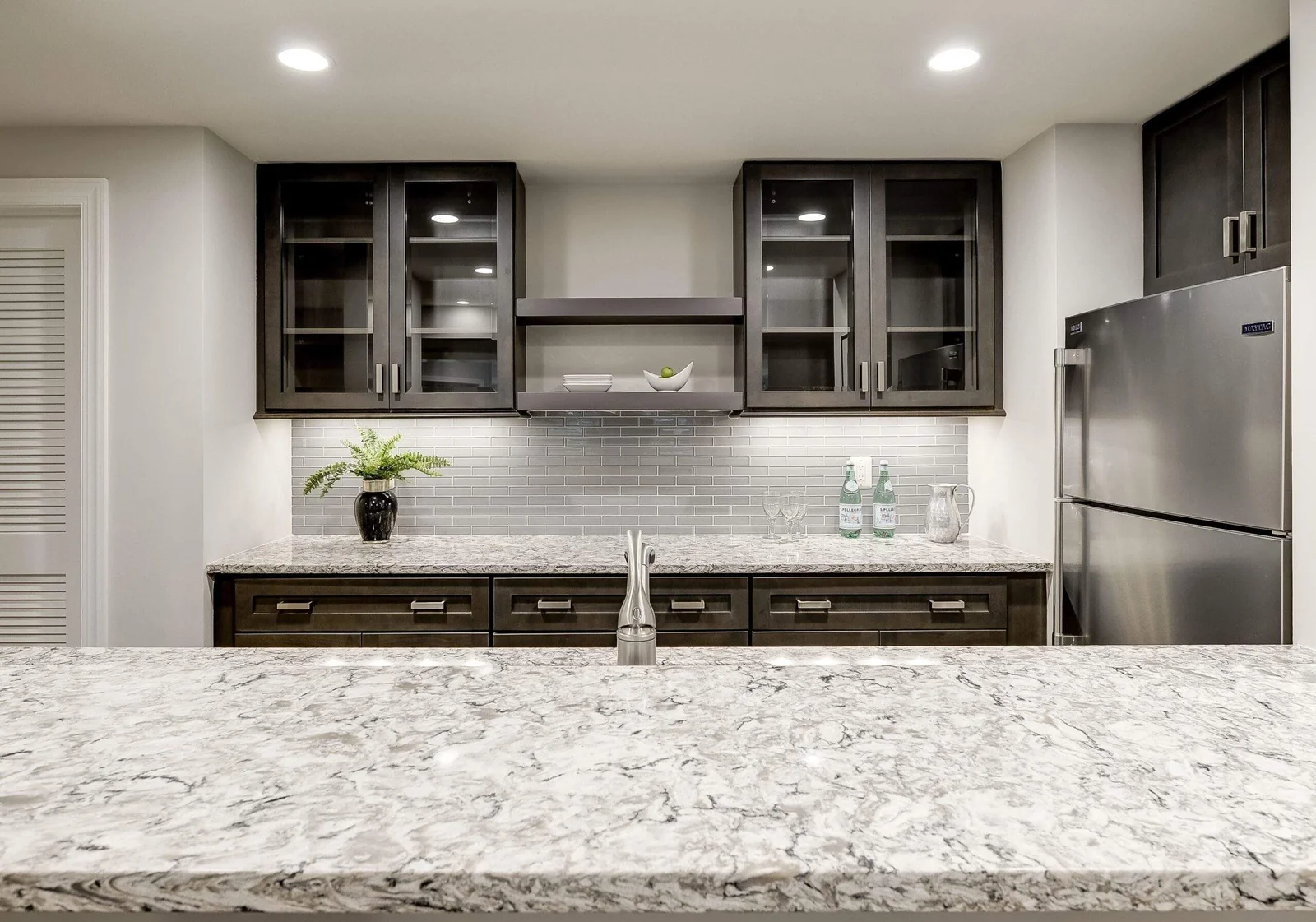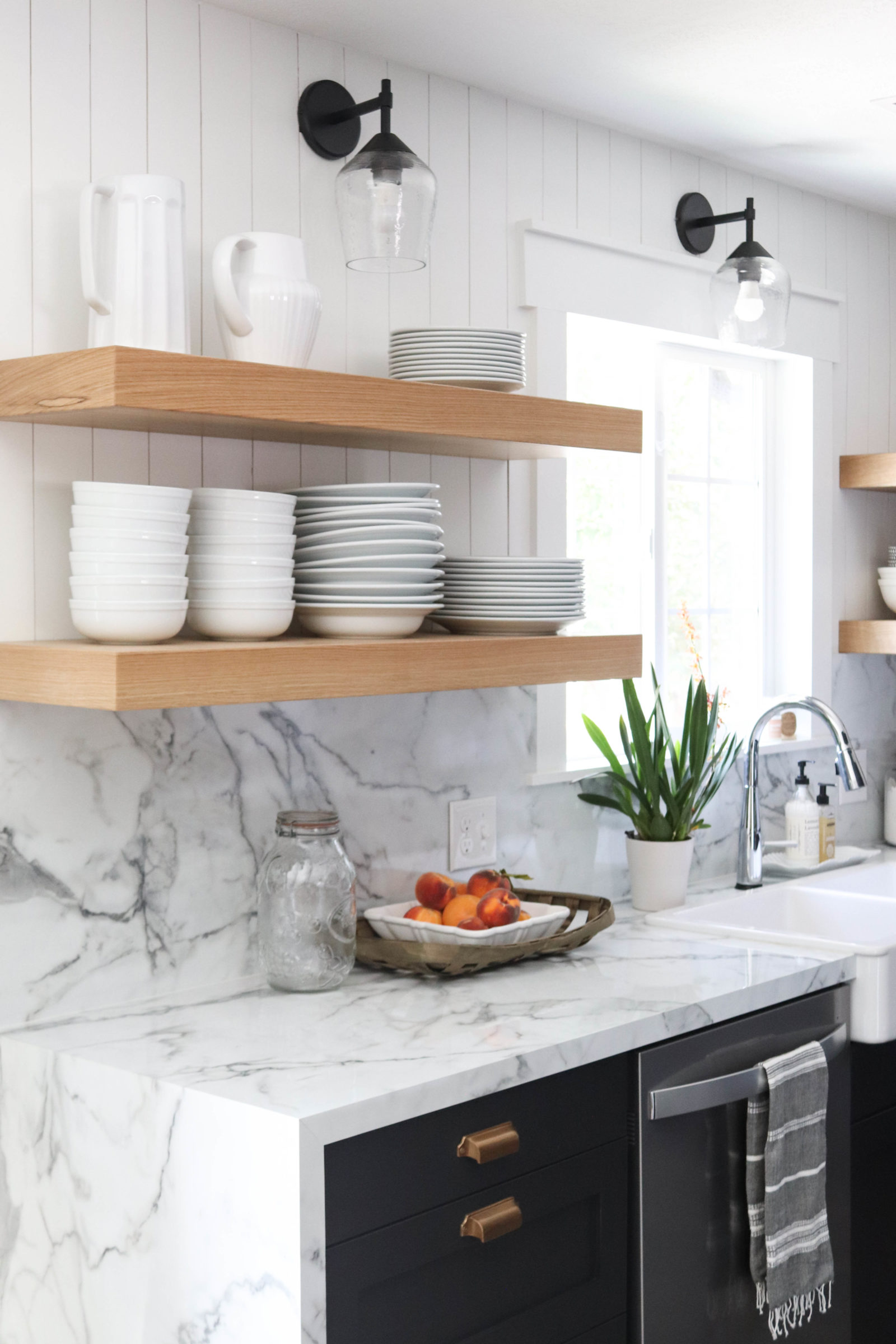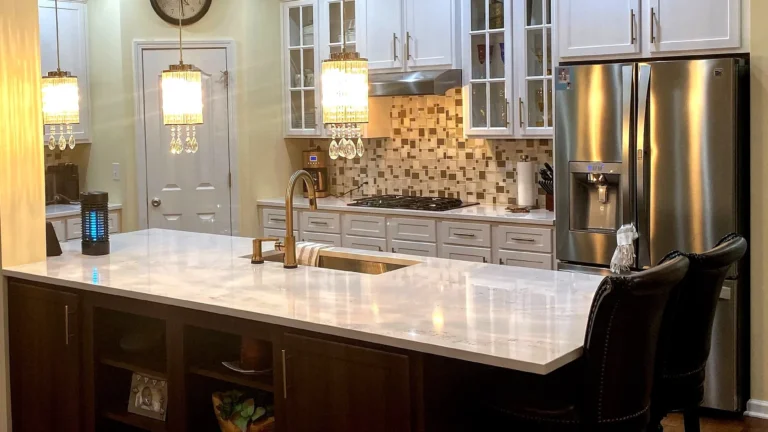Radius backsplash quartzite might sound like a specialized term, but it’s actually a combination of two design elements that enhance both the aesthetics and functionality of a space. Quartzite, known for its durability and natural beauty, is increasingly chosen for surfaces such as countertops and backsplashes.
When combined with the elegant curve of a radius design, it creates a backsplash that not only stands out visually but also offers practical benefits. In this article, we will explore the advantages of using radius backsplash quartzite, delve into design considerations, and provide maintenance tips to help you make the most of this stunning material in your home.
What is a Radius Backsplash quartzite?
A radius backsplash quartzite refers to a design element where the edges of the backsplash have a curved or rounded shape rather than the traditional sharp, 90-degree angles. This curvature can be subtle or more pronounced, depending on the design preference and the overall aesthetic of the space.
The use of radius in design is not just about aesthetics; it also has practical implications. Rounded edges can create a softer look and feel, which can be particularly appealing in modern and contemporary interiors. Additionally, they can enhance safety by eliminating sharp corners, making them a great option for homes with children or high-traffic areas.
Why Choose Quartzite for Your Radius Backsplash?
Quartzite is a metamorphic rock that originates from sandstone. It undergoes a high-pressure and high-temperature transformation, which results in a dense and durable stone with unique color variations and patterns. Here’s why quartzite is an excellent choice for radius backsplashes:
- Exceptional Durability: Quartzite is renowned for its hardness and durability. It is one of the hardest natural stones available, which means it is highly resistant to scratches, heat, and staining. This makes it ideal for a backsplash that will be exposed to daily wear and tear.
- Natural Beauty: The natural veining and color variations in quartzite make each piece unique. From subtle neutrals to bold patterns, quartzite can complement a wide range of design styles. The radius design can accentuate these natural patterns, adding a touch of elegance and sophistication to your space.
- Low Maintenance: Quartzite is relatively easy to maintain compared to other natural stones. It typically requires only regular cleaning with mild soap and water. Sealing is recommended to maintain its stain resistance and enhance its longevity.
- Versatility: Quartzite’s versatility means it can be used in various applications beyond just backsplashes. Its cohesive look can seamlessly integrate with countertops, flooring, and other surfaces, creating a unified design throughout your space.

Design Considerations for a Radius Backsplash
When planning a radius backsplash with quartzite, several design considerations can help you achieve the desired look and functionality:
- Curvature Radius: The size of the radius will greatly influence the overall appearance of your backsplash. A larger radius creates a more dramatic curve, while a smaller radius offers a subtler effect. The choice depends on your design preference and the space’s overall style.
- Edge Treatment: Quartzite can be cut and shaped to achieve various edge treatments. Whether you prefer a sleek, polished edge or a more textured finish, the edge treatment will impact how the radius blends with the rest of the kitchen or bathroom.
- Seamless Integration: For a polished look, consider how the radius backsplash integrates with other elements in the room, such as countertops and cabinetry. Ensuring that the backsplash aligns with other design features will create a cohesive and elegant appearance.
- Color and Pattern Matching: The natural veining and color of quartzite can vary widely. When selecting quartzite for your backsplash, choose a color and pattern that complements the other materials and design elements in your space.
- Professional Installation: Proper installation is crucial for achieving a flawless radius backsplash. Working with a skilled fabricator who has experience with quartzite and curved designs is essential to ensure precision and a high-quality finish.
Advantages of a Radius Backsplash
- Enhanced Aesthetics: The curved edges of a radius backsplash can soften the lines of the kitchen or bathroom, creating a more elegant and modern look. This design choice can help break up the harshness of straight lines and angles, adding visual interest and sophistication.
- Improved Safety: Rounded edges are inherently safer than sharp corners. In high-traffic areas or homes with children, the risk of injury from sharp edges is minimized, making the space more user-friendly and child-safe.
- Easier Cleaning: The absence of sharp corners makes cleaning easier. Spills and splashes are less likely to accumulate in crevices, and a smooth, rounded surface is simpler to wipe down.
- Increased Resale Value: Investing in high-quality materials like quartzite and incorporating thoughtful design elements such as a radius backsplash can enhance the value of your home. Potential buyers often appreciate the elegance and durability of well-designed surfaces.
Maintenance Tips for Quartzite Backsplashes
- Regular Cleaning: Clean your quartzite backsplash regularly using mild soap and water. Avoid abrasive cleaners or harsh chemicals that could damage the surface.
- Sealing: To maintain its stain resistance, quartzite should be sealed periodically. The frequency of sealing depends on the type of quartzite and the level of use. Consult with your installer for specific recommendations.
- Immediate Spill Cleanup: Wipe up spills promptly to prevent staining. While quartzite is resistant to stains, it’s always best to address spills as soon as they occur.
- Avoid Excessive Heat: Although quartzite is heat-resistant, it’s a good idea to use trivets or heat pads to protect the surface from hot pans and cookware.
- Use Cutting Boards: To prevent scratches, use cutting boards for food preparation rather than cutting directly on the quartzite surface.

Conclusion
A radius backsplash quartzite combines the timeless beauty and durability of natural stone with a modern, elegant design. The incorporation of rounded edges adds a unique touch to your kitchen or bathroom, enhancing both aesthetics and functionality. Whether you’re renovating an existing space or designing a new one, quartzite’s natural beauty and practical benefits make it an excellent choice for a radius backsplash.
By carefully considering design elements and working with experienced professionals, you can create a stunning and functional backsplash that enhances your home’s overall look and value. Enjoy the elegance and practicality of quartzite, and let its natural charm elevate your space to new heights.
FAQs
1. What is a radius backsplash?
A radius backsplash features rounded or curved edges instead of sharp, 90-degree angles. This design choice adds a soft, elegant touch to the space and can improve safety by eliminating sharp corners.
2. Why should I choose quartzite for my backsplash?
Quartzite is a durable, natural stone known for its hardness, resistance to scratches, heat, and stains. Its unique color variations and patterns make it a beautiful choice for backsplashes, and its low maintenance requirements add to its appeal.
3. How does a radius backsplash benefit my kitchen or bathroom?
A radius backsplash enhances aesthetics by providing a smooth, elegant curve that can soften the look of a space. It also offers practical benefits, such as increased safety by reducing sharp edges and easier cleaning by minimizing crevices where spills can accumulate.
4. What should I consider when designing a radius backsplash with quartzite?
Consider the size of the radius for the desired visual impact, the edge treatment for a polished look, and how the backsplash integrates with other design elements in the space. Additionally, choose a quartzite color and pattern that complements the room’s overall design.
5. How should I maintain my quartzite backsplash?
To maintain your quartzite backsplash, clean it regularly with mild soap and water. Seal the surface periodically to enhance its stain resistance, and address spills promptly to prevent staining. Avoid using abrasive cleaners and protect the surface from excessive heat and direct cutting.
